There is a major difference between engaged employees and disengaged ones. It all boils down to relationships and communication between managers and employees. If there’s a lack of motivation and communication, engagement levels will suffer. And if engagement suffers, your business will take a hit, too.
According to a Gallup study, 15% of US employees in 2021 were actively disengaged with their jobs. Of this group, 74% were actively looking for a new job or keeping an eye out for openings. This is why it’s important to alleviate employee disengagement issues. From productivity to company reputation and employee turnover, disengagement impacts all the areas that make a thriving and successful workforce.
If you’re looking to avoid disengagement problems or improve how employees connect with information and each other, you came to the right place. Here are 20 problems linked to employee disengagement:
1. Employee satisfaction.
There could be many reasons why employees may or may not be satisfied with their jobs … but poor engagement levels are typically a result. People want to feel important and that their work matters—when employees take pride in their jobs they will also take pride in the work that they produce. But this can be difficult if the workplace culture is stagnant and disengaged. Try implementing some employee engagement activities to create team bonding experiences and make your employees feel like you care.
2. Employee turnover.
Nobody wants employee turnover. Think about the time, money, internal resources, and energy that goes into onboarding new employees. If people end up leaving after they’re hired, it’s a lot of work for no payoff. US businesses lose approximately $11 billion annually due to employee turnover, according to the Bureau of National Affairs. People who don’t feel connected to their work have little reason to stick around. If offered a position elsewhere, they may take it.
3. Disengagement costs a fortune.
As a mentor and leader in your company, you don’t want your employees to be unhappy or disconnected. Issues related to employee disengagement extend much further than this, though. An actively disengaged employee costs their organization $3,400 for every $10,000 of salary, or 34%, according to Gallup. When employees are disengaged, a companies’ overall success hinders. Employee disengagement not only looks bad, it impacts your profits, too.
4. Unproductive workforce.
Your company can’t move forward without a productive workforce. Managers often use productivity as a benchmark when evaluating employees. But they learn the hard way that productivity suffers if there’s no effective employee engagement strategy in place. According to Deloitte, federal agencies lose $65 billion a year as a result of lost productivity. On the flip side, organizations with highly engaged employees achieved twice the annual net income compared to organizations with employee disengagement issues, according to Kenexa. Keeping employees on task is hard when they’re not engaged in their work.
5. Employee disengagement is contagious.
You shouldn’t ignore disengaged employees. It may start as a seemingly small problem, but disengagement is contagious. It will spread throughout the company. Bad attitudes rub off on people, and employee disengagement will get worse if you don’t address the issue immediately.
6. Millennial turnover.
Millennials and Gen Z are the future of the professional landscape. They’re tech savvy, open to new ideas, and creative. These younger generations are also picky about who they work for. If you don’t create an environment focused on employee engagement and learn how to communicate with millennials at work, they’re going to leave. Remember #2 above?
7. Employee disengagement hurts collaboration.
Collaboration between employees is a beautiful thing. It’s responsible for ideation, innovation, and creative problem solving. Employee disengagement has negative effects on project collaboration because it causes employees to withdraw and avoid working with each other. For this reason, prioritize collaboration. If you allow collaboration to suffer, your business will follow along with it.
8. Employee input will disappear.
Your employees are the lifeblood of your organization, and their input matters. Like collaboration, employee input can lead to new ideas, new processes, and positive momentum. But nobody wants to make suggestions if they don’t feel connected to their job. Without this connection, disengaged employees will unplug from meaningful conversations.
9. Employee disengagement affects sales.
Every company department is important, but your sales team keeps the customers coming in. You put a ton of work into keeping sales’ productivity levels high, and for good reason. If you want to increase sales, the team needs to feel content in their environment. Otherwise, employee engagement levels are going to fall, and sales will be impacted, too.
10. Employee disengagement affects customer service.
Customer service is important. You may think you’re doing a good job, but when was the last time you checked in with your processes and support team? Disengaged employees don’t care about your customers. And today’s customers won’t have the time or inclination to deal with poor customer service. They’ll go somewhere without looking back.
11. Disengaged employees don’t show up to work.
When employees don’t show up to work on a regular basis, you know there’s a problem. Occasional absenteeism isn’t necessarily a bad sign, but once patterns start forming, it’s time to take action and apply some new employee engagement ideas. Absenteeism and employee disengagement are connected.
12. Employee disengagement affects company culture.
Don’t ignore your company culture. Building culture takes participation from everyone, and by nature, employee disengagement will cause employees to close off from actively contributing. For a company to have its unique vibe, employees need to feel positive and engaged in their work. After all, there’s nothing worse than a boring, run of the mill company with no sense of individuality.
13. Lack of improvement.
Even if you think you have the best employees, there is always room for improvement. When staff members get better at what they do, the entire organization benefits. Learning new skills requires motivation … and employee motivation comes from high engagement levels. The chances that disengaged employees will get better at what they do are low, but that’s not to say that they can’t get better. This is just one more reason to focus on improving employee engagement in the workplace.
14. Lack of empowerment.
There are distinct differences between employee engagement, employee experience, and employee empowerment. When employees feel they’re doing good work and are happy with their jobs, they’re likely to feel empowered. They will own their work. They will go the extra mile by contributing more.
15. Lack of growth.
Growth should be the goal for anyone in a leadership position, and it takes effort to get there. Building a company from the ground up is not something that happens overnight. Growth should be natural, and much of this depends on your staff. Engaged employees are not ones to sit back in a stagnant environment. They will improve and make changes. When employees are disengaged, they’re not going to contribute to your organization’s growth.
16. Disengaged employees are difficult to manage.
Managing a group of employees of any size can be challenging, so why make things harder? Engaged employees are easy to work with. They’ll listen to your ideas, fix issues, and take criticism well. If your staff is disengaged, they’ll drag their feet and disrupt positive energy in the workplace.
17. Disengaged employees make costly mistakes.
A major reason to try new employee engagement programs is to avoid mistakes, or instill a workforce who actively takes charge when a problem occurs. All it takes is one flaw in a product or service to anger and alienate customers. People who pay attention to what they’re doing will avoid mistakes at all costs. Disengaged employees won’t care enough to focus their attention on the details.
18. Disengaged employees aren’t leaders.
A great company is one that invites internal growth and hiring from within. Someone working in an entry-level position could be a great candidate for a leadership position some day. But they have to be engaged in their work to even want to take the next step. Hiring from within promotes employees who know the company well and are striving for success. Disengaged employees are likely not interested in taking the lead.
19. Employee disengagement = Safety issues.
In many industries, safety is a huge concern. Often, safety outcomes depend on an employees’ focus and attention. When focus dwindles, problems can happen … some of which can be dangerous with costly consequences. In some cases, safety problems are grounds for lawsuits and you need to avoid them. A great place to start is to improve engagement levels in your organization to empower a focused workforce.
20. Poor quality products and services.
Along with providing great customer service, pushing out benchmark products and services is a top priority. This is the most direct route to build a strong customer base. Great products and services come from great employees, which is why you should hire the right people in the first place. But, even the strongest employees will face challenges when employee disengagement is an issue in the workplace. If people aren’t engaged, innovation will lag.
In conclusion.
There are plenty of reasons why you can’t afford to have employee disengagement in the workplace. These 20 points just scratch the surface. Your organization and employees deserve to be in an engaged environment where employees are supported with transparent communication and a culture that supports individual and team goals.
There will always be factors you can’t control, but focusing on the ones you can will make a difference. Be there for your employees and create a supportive work environment for everyone to thrive.

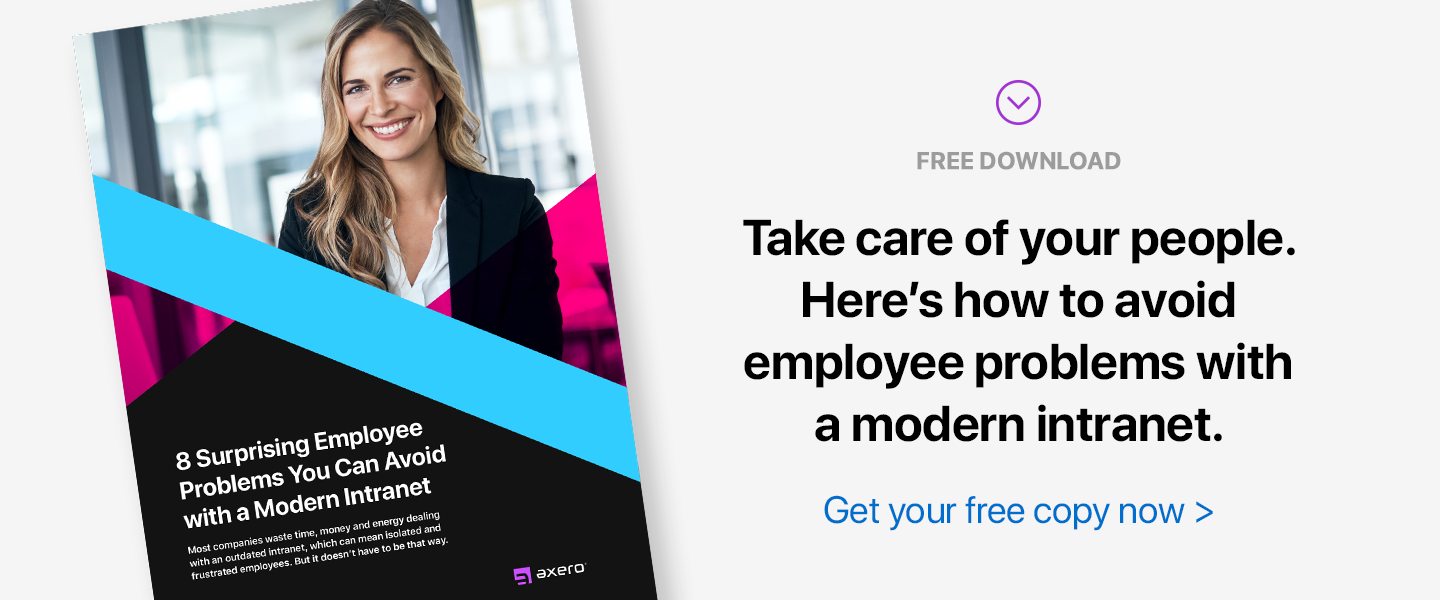
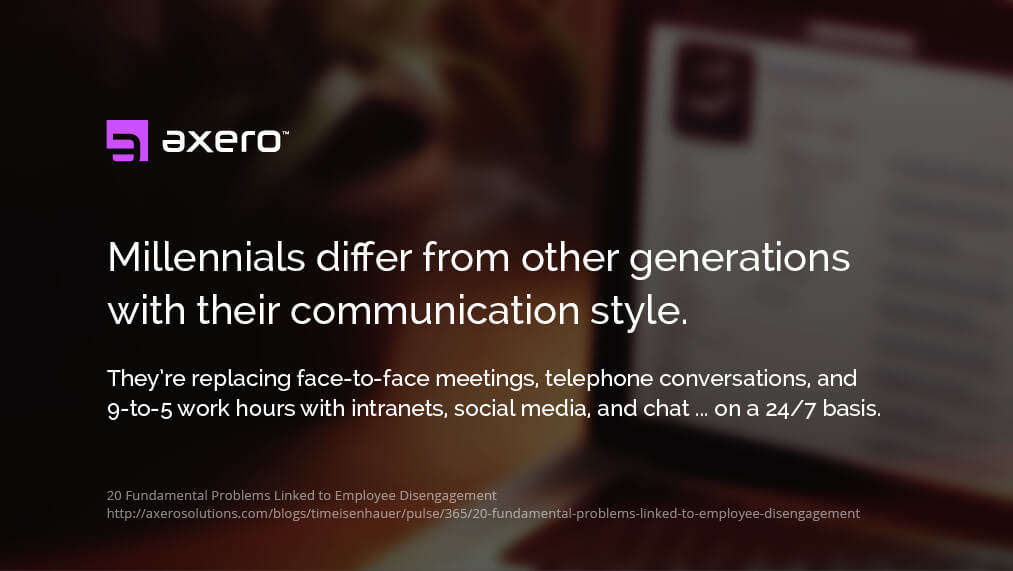

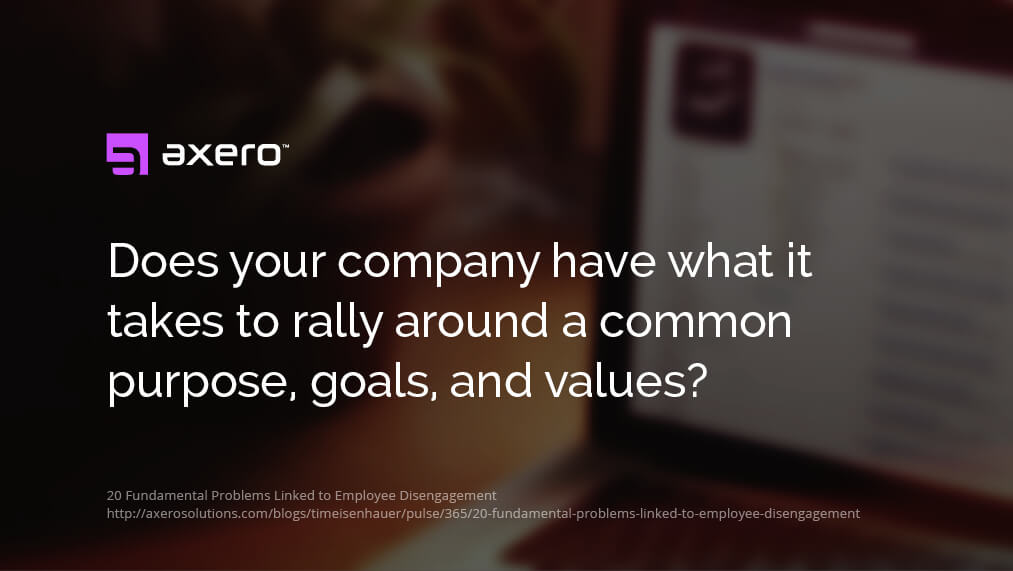

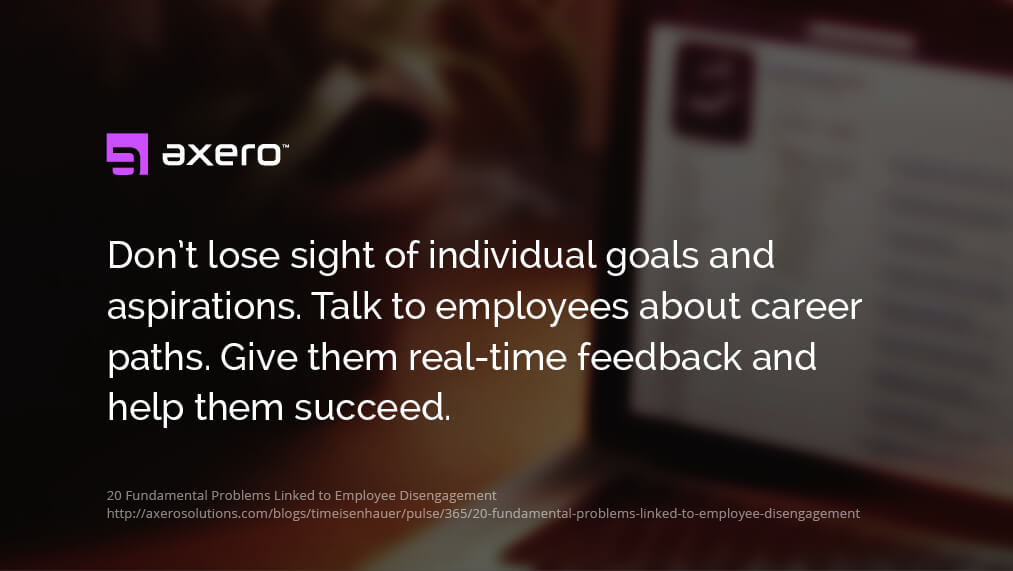
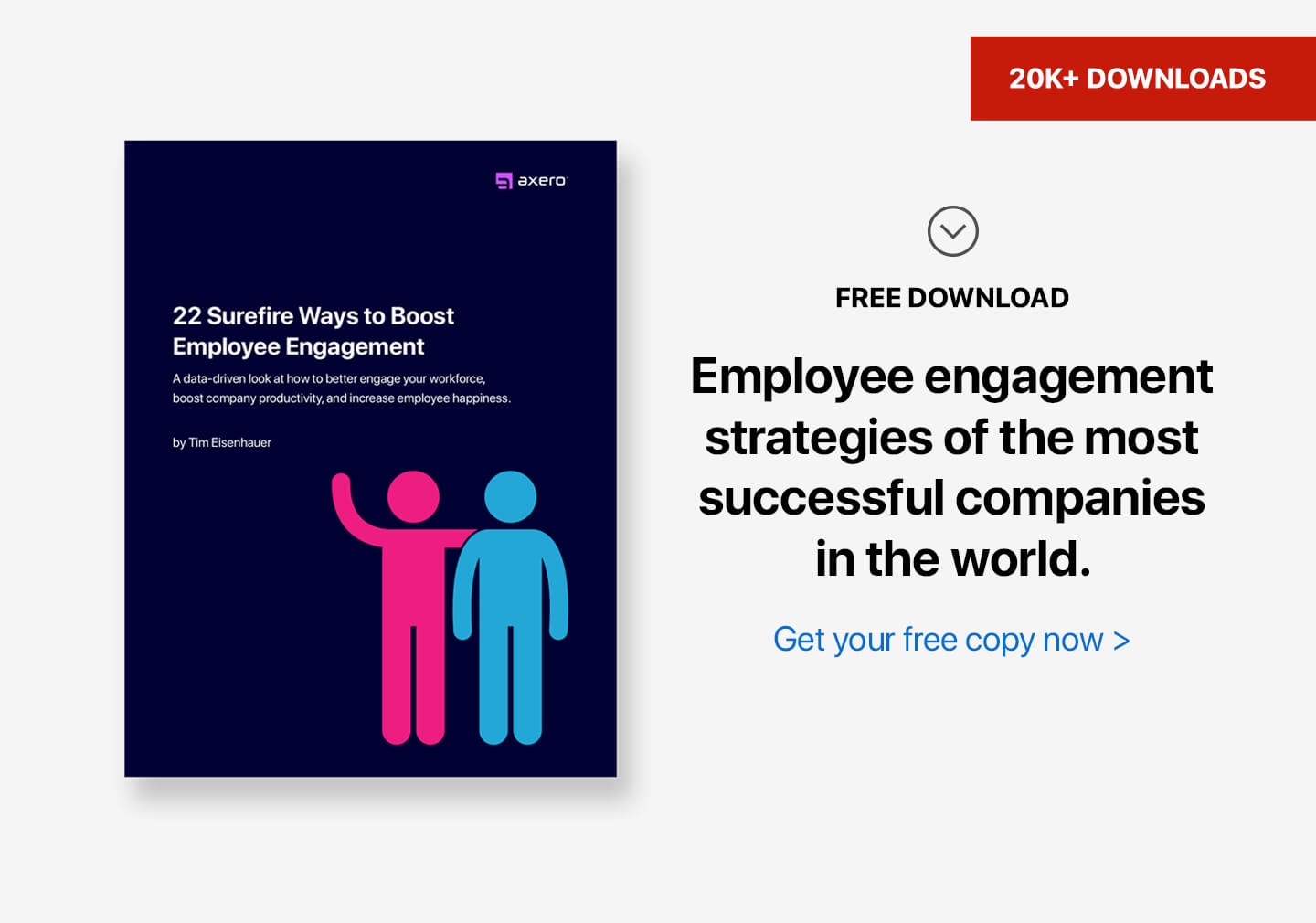










 info@axerosolutions.com
info@axerosolutions.com 1-855-AXERO-55
1-855-AXERO-55


